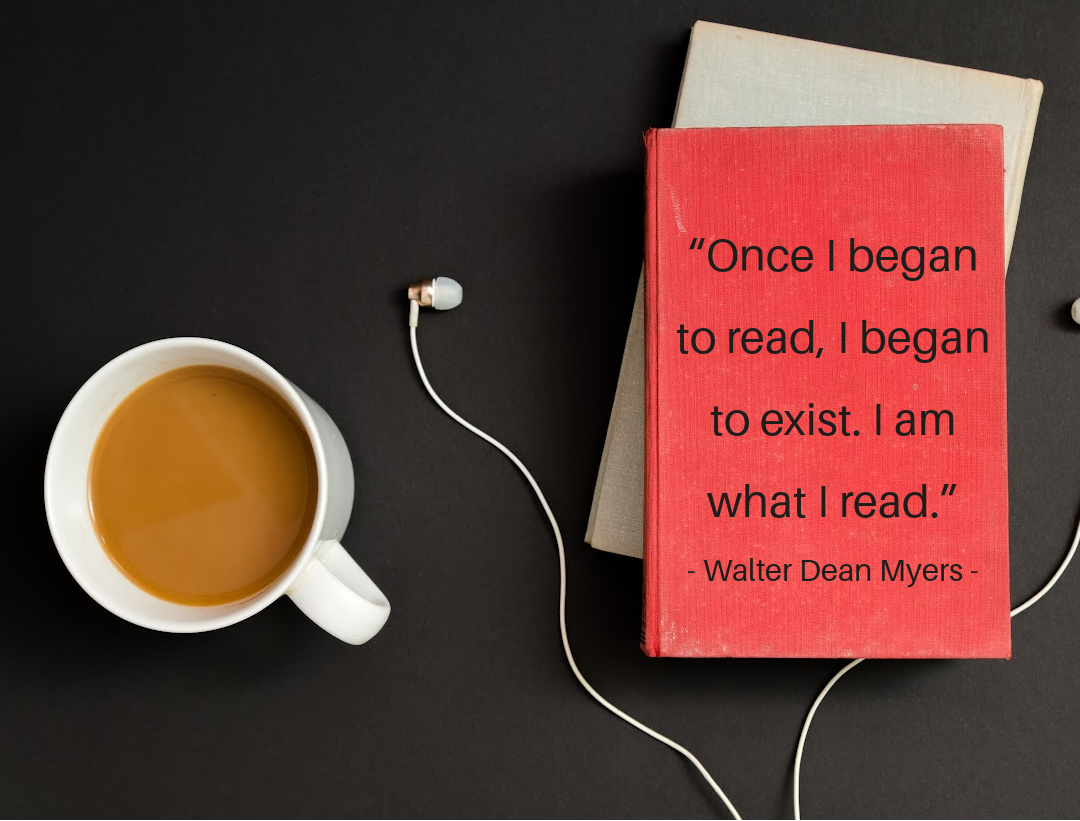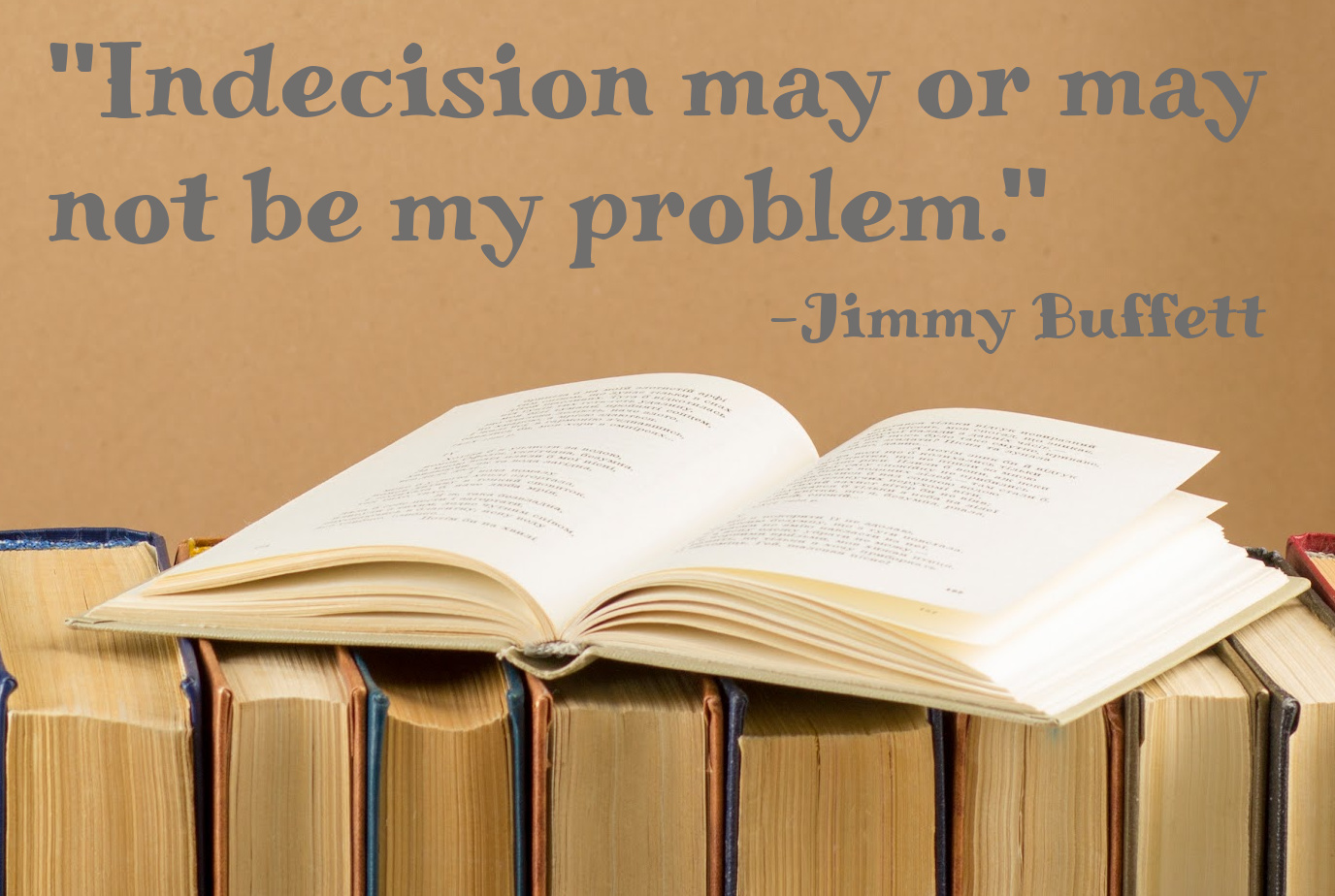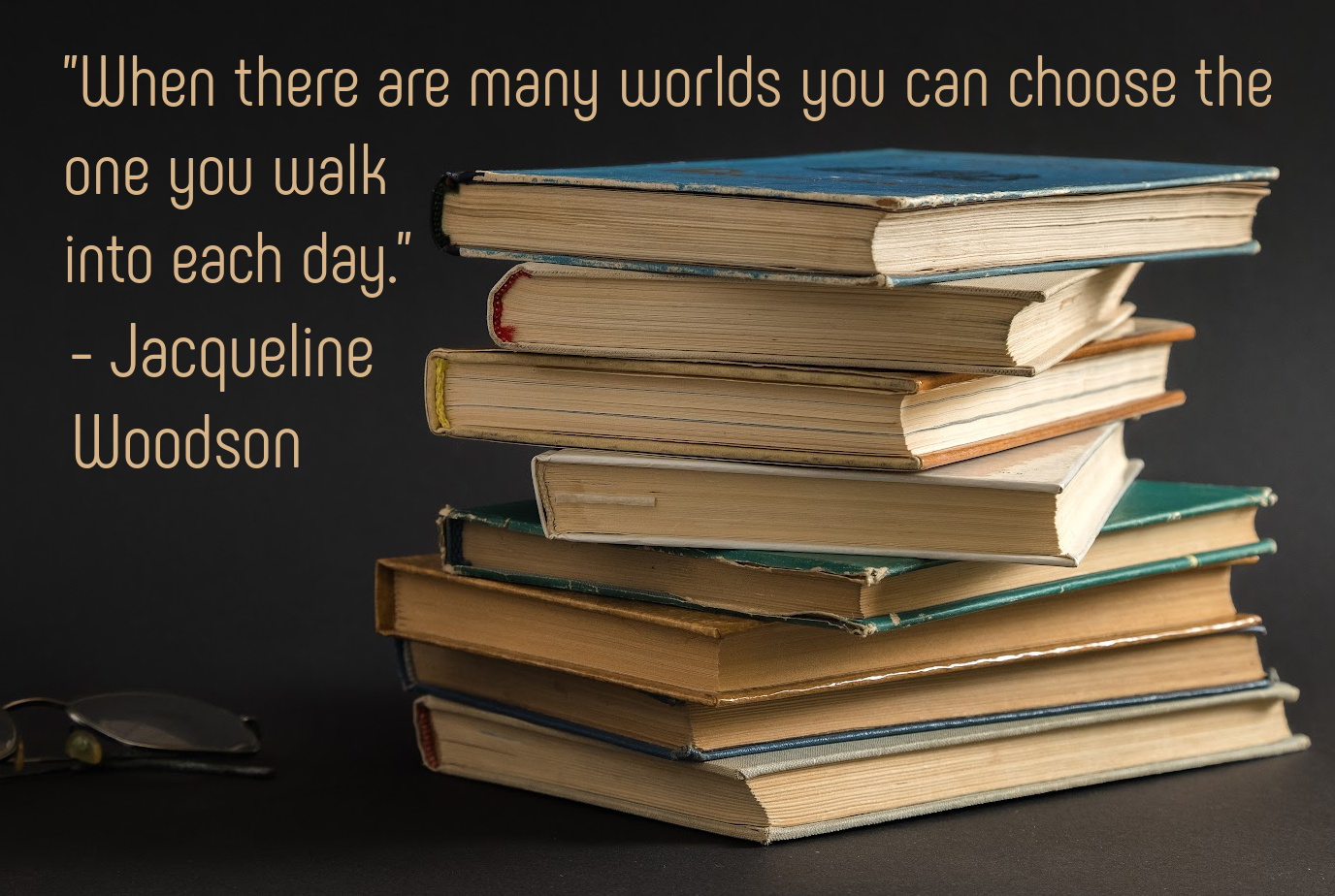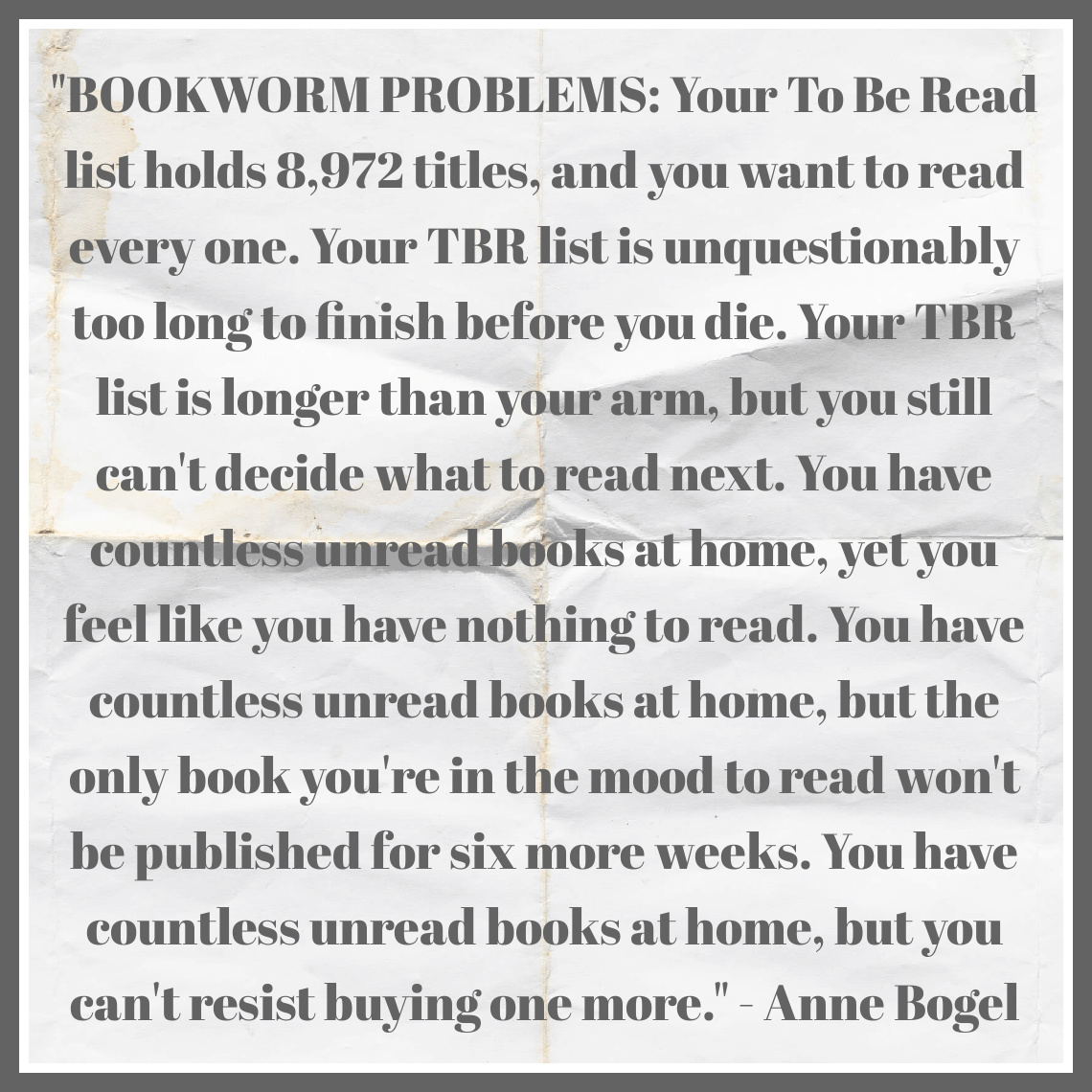Deciding what to read can be as simple as picking up the most convenient book on the shelf. But for the bookish souls among us, it often becomes a much more complicated high-maintenance involved exciting affair, with entire blogs, podcasts, and websites dedicated to helping readers make those big decisions.
I have never been one to go about doing things the simple way, so you can imagine that my own book selection process is just that: a process. And to explain this process, I need to begin with a general overview of how I structure my reading life, the main factor being that I am always reading multiple books at once, including a read-aloud with Charleston, an audiobook, a book on Kindle, and a book in print. (I also read through a daily devotional every year, but as that is only an annual reading choice it holds no bearing on the rest of my reading life.)

The read-aloud selections don’t usually play into my other reading choices because they are chosen based on Charleston’s preferences, and because my reading time with him is entirely separate—both physically and mentally—from the rest of my reading life. This leaves me with three remaining puzzle pieces—audiobook, ebook, print book—to consider. I like for these books to be different so that 1) I don’t confuse them as I’m reading and 2) I always have a different genre to jump into if another book isn’t holding my interest.
I occasionally read books for a book club, buddy read, or personal reading challenge, and those books take priority and put limitations around my other book choices: for example, if I’m reading a print book on apologetics for a book club, my Kindle and audiobook selections will be outside of that genre. If I’m doing a slow-but-steady read (which often happens when reading along with Luke’s book club, since they only read one or two chapters of a book each month), I will probably double up on that genre within the same format. Case in point: Luke’s group is reading a Dallas Willard book right now; I’m reading that along with them on Kindle, and I’m also reading another spiritual formation book on Kindle at my own pace.
Ideally, I will finish my Kindle, audio, and print books at the same time and can go in fresh when picking my next three books. This rarely happens, though, so I often find myself “cornered” into reading one particular genre in a specific format: for instance, if I have finished my book on apologetics in print but am still reading a mystery on Kindle and a biography on audio, I will steer towards the Christian Living genre once again for my next print read.
Another complicating factor is that I generally don’t love fiction on audio, especially literary fiction, and there are some books I know I’ll want to highlight and take notes in, so reading on audio or a print book from the library are not options. These parameters may seem constrictive, but I actually find them useful for limiting overwhelm and indecisiveness.

Now that I’ve laid the groundwork for what and how I am reading, let’s get to the specifics of book selection. I know many readers follow strict protocols and formulas (reading only seasonally, or prioritizing new or upcoming releases, etc.), but I am far too much of a mood reader to follow a rigid system. HOWEVER, I also am reluctant to enter a book blind—it’s rare for me to jump into a book I know nothing about. So picking the next books is all about creating a selection pool to choose from.
I get a lot of my book recommendations from podcasts, blogs, and readers in my personal life. When I learn about a book that interests me, I immediately add it to my TBR on Goodreads. I also check out Hoopla and Libby, and if the recommended book is there I will tag it or place a library hold. This almost never means I will pick up that book immediately; these steps just form my candidate list for when I am ready to start a new book.
I bolster my TBR with occasional blocks of time spent perusing Hoopla or Libby, when I look through recent releases or backlist titles in a certain genre. If those books that caught my eye still sound appealing after I’ve read some Goodreads or Amazon reviews, I will tag those books to be read later.
I rarely buy books in print, but I subscribe to a couple of daily Kindle Deals emails, and when a title from my Goodreads TBR goes on sale and I know the books is not available at my library I will usually purchase it (especially if it’s a book I know that it’s a book not available at my library). These purchased books are sorted into Collections on my Kindle (a Fiction TBR and a Nonfiction TBR), available for reading when the time is right.

When I finish a book, I immediately write a book review (I don’t allow myself to jump into a new book before that review is written), then go about choosing what to read next. If I have a library hold that has come through, it’s an easy decision (though I’m the queen of delaying library holds when they come through at inconvenient times). If there are no holds, I’ll look through my tagged books on Hoopla or Libby, or on the physical shelf at my library, or the Kindle books I already own.
I have no real method for choosing a book from this assortment of vetted books beyond “what sounds good to read right now?” If I just finished up a longer book, I’ll probably go for something shorter, and vice versa. I don’t like to read back-to-back books that are too similar, so literary fiction is often followed by something a little lighter. Lately I’ve been trying to bring more balance between new releases and backlist choices, so if I’ve just read a string of books that came out in the past few months, I’ll go for a book written years earlier.
Sometimes, even after these many steps, I struggle to nail down that final decision. If that’s the case I’ll download/borrow a few of the top contenders and read or listen to the first chapter or two. This sampling helps me narrow down what I’m really itching to read, and I’ll continue on with my choice, setting the other books aside for later (or, if the sampling was not to my taste, I’ll write the book off altogether and delete the title from my TBR).
Typing all of this out, I am realizing that my process is much more involved than I had realized! I’m probably overthinking the entire thing, but it’s a process that works for me, bringing a range of books I enjoy while keeping balance between genres and book formats in my reading life. I am generally not a book-quitter: after I’ve read through the first couple of chapters, I invariably see the book to the final pages (even if it requires a format shift or some skimming to make that happen), so the method of choosing my next read really does matter.

Now that you’ve read more than you probably ever wanted to know about how I choose what to read, I’d love to hear from you: how do YOU go about deciding what to read next?
Book choice problems are the best problems! My process would sound as complicated and complex as yours if I described it! I’m an incorrigible mood reader. I’m quick to dnf a book. I like to read my arcs as soon as I get them because I don’t want to feel pressure as the pub date approaches. I really dread when my library holds come in at the same time! If I don’t write the review immediately, I always make notes which jog my memory. My biggest book problem is reading an arc of a book that isn’t to my taste and then formulating a review. Last month I had to contact a publisher and say “I just can’t!” I also spend a great deal of time vetting books. I feel as if I’m getting pickier. I loved getting a peek into your process! Happy reading!
It’s so funny how different everyone’s process is. I could never do arcs because I need to know the book will be a win for me—give me all the info ahead of time so I can make an informed decision!
Yeah, arcs can be risky! Living dangerously in the book world ⚠️